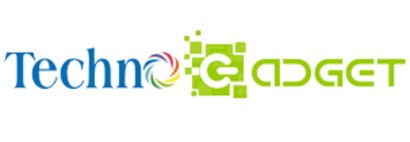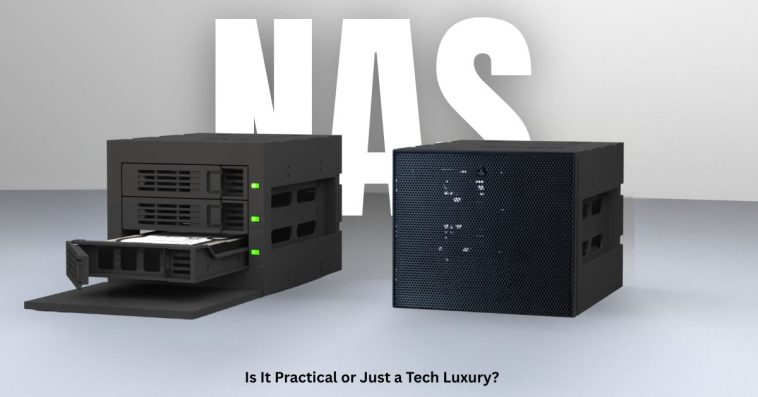Your phone is full of photos, your laptop keeps flashing low-storage warnings, and every time you try to organize your files, you discover they’re scattered across multiple cloud accounts. Sound familiar? Now imagine having your own private cloud — sitting quietly on a shelf in your home — giving you instant access to everything you own, from anywhere in the world, without monthly fees. That’s what a NAS at home can do.
But here’s the real question: is owning NAS at home actually practical, or is it just something for IT geeks with spare servers and Ethernet cables lying around? In this in-depth guide, we’ll break down what NAS really is, who it’s for, how much it costs, and how to make it work seamlessly in your life. Whether you’re a casual home user, a photographer, or someone running a small business, this guide will help you decide if NAS at home is worth it — and how to make it simple, safe, and surprisingly affordable.
What Exactly Is NAS (and Why You Might Want It at Home)
The Simple Explanation
NAS stands for Network-Attached Storage — basically, a smart external drive that connects to your home network instead of plugging directly into one computer. This means every device in your home — laptops, phones, TVs, tablets — can access the same files without needing to copy them around. Think of it like a digital filing cabinet that everyone in your home can open at once.
In practical terms, a NAS is a small box that holds one or more hard drives. It plugs into your Wi-Fi router or network switch, runs its own lightweight operating system, and stays on 24/7. You can use it to:
-
Back up your computers automatically
-
Store and stream movies, music, and photos
-
Access your files remotely (like a private cloud)
-
Share data between family members or coworkers
-
Run mini-apps such as media servers or security camera recorders
In short: NAS brings the power of cloud storage — but keeps your data in your hands, inside your home.
💡 Quick Tip: Think of a NAS as your personal Google Drive that never charges you monthly fees and never locks you out.
Who Should (and Shouldn’t) Have NAS at Home
Let’s be practical. NAS isn’t for everyone — but for the right person, it’s a game-changer.
NAS at Home Makes Sense If:
-
You have multiple devices and want a shared storage hub.
-
You shoot lots of videos or photos and need long-term backup.
-
You work from home and handle large files (designers, writers, photographers, or videographers).
-
You want to build a home media server (Plex, Jellyfin, or Emby).
-
You’re privacy-minded and don’t like relying on third-party clouds.
It Might Not Be For You If:
-
You mainly use cloud storage (Google Drive, iCloud, OneDrive) and are happy paying for it.
-
You rarely back up files or only use one device.
-
You’re uncomfortable doing basic tech setup or maintenance.
If that second list feels like you, a NAS might add more hassle than benefit. But if you nodded “yes” to the first list, read on — because a NAS could transform your digital life.
The Real Benefits of Owning a NAS at Home
| Benefit | What It Does for You | Example in Everyday Life |
|---|---|---|
| Centralized Storage | Keeps all files in one secure place, accessible from any device. | No more emailing yourself files or juggling flash drives. |
| Automatic Backups | Saves new or changed files automatically, without manual effort. | Your laptop dies? Everything’s already safe on the NAS. |
| Media Server Power | Streams movies, photos, or music directly to your smart TV or phone. | Watch 4K movies from your NAS in the living room. |
| Private Cloud Access | Lets you access files remotely through a secure login. | Retrieve a contract while traveling — no Dropbox needed. |
| No Monthly Fees | One-time purchase, then you own your storage forever. | After two years, you’ve already saved compared to cloud costs. |
| Enhanced Privacy | Your data stays in your house, under your control. | No third-party companies reading your data or tracking usage. |
Fun Fact: A NAS can even serve as a small web or game server if you like experimenting with home tech.
Real-Life Example: When NAS Just Works
When photographer Maria Alvarez lost her laptop on a business trip, she feared years of work were gone. But because she’d set up her NAS at home with nightly automatic backups, she restored her entire portfolio within hours.
Her comment sums it up best:
“The NAS paid for itself the first time my laptop didn’t.”
That’s the kind of peace of mind cloud subscriptions rarely guarantee — because you’re always relying on someone else’s uptime and policies.
The Practical Side: Costs, Power, and Maintenance
So far, it sounds perfect — but let’s get real about what’s involved.
1. The Upfront Cost
NAS isn’t free, but it’s not outrageous either. You’ll need:
-
NAS enclosure: $200–$600 (e.g., Synology, QNAP, or TerraMaster)
-
Hard drives: $100–$150 per 4TB drive (NAS-rated like WD Red or Seagate IronWolf)
-
Optional SSD cache: $80–$200 (for faster speeds)
A simple 2-bay setup with 8TB total storage might cost around $400–$600 — about the same as two years of 2TB cloud storage plans.
2. Power and Noise
A typical NAS uses 20–50 watts when active and much less when idle. That’s roughly $30–$60 a year in electricity. Place it somewhere ventilated — like a media cabinet — to avoid overheating.
⚙️ Quick Tip: Most modern NAS units let you schedule “sleep” times when they spin down drives to save power.
3. Maintenance
-
Update firmware every few months.
-
Check drive health (SMART monitoring).
-
Replace failing drives promptly.
-
Keep an offsite backup (either cloud or another NAS).
It’s not difficult — think of it like maintaining a car: a little attention goes a long way.
NAS vs Cloud Storage: What’s the Smarter Choice?
| Factor | NAS at Home | Cloud Storage |
|---|---|---|
| Cost | One-time investment | Monthly or annual fees |
| Privacy | 100% under your control | Dependent on provider |
| Access Speed | Instant over local network | Limited by internet |
| Maintenance | Manual setup & upkeep | Zero maintenance |
| Scalability | Limited by drive bays | Virtually unlimited |
| Availability | 24/7 uptime depends on you | Managed by provider |
The best solution for most people is a hybrid setup — use NAS for daily access and backups, but sync critical folders to a cloud service for disaster recovery.
Setting Up a NAS at Home (Step-by-Step Guide)
Even if you’re not tech-savvy, setting up a NAS is easier than you think.
Step 1: Choose the Right Type
-
Plug-and-Play NAS: Synology or QNAP units are beginner-friendly.
-
DIY NAS: Build your own using software like TrueNAS or Unraid — great for tech tinkerers.
Step 2: Pick Your Drives
-
Use NAS-rated drives (WD Red, Seagate IronWolf).
-
Start with 2-4 drives and set them up in RAID 1 (mirroring) for redundancy.
-
Choose total capacity at least 30% higher than your current needs.
Step 3: Initial Setup
-
Connect NAS to router via Ethernet.
-
Use the manufacturer’s setup wizard (e.g., Synology Assistant).
-
Create shared folders (e.g., “Backups,” “Photos,” “Movies”).
-
Enable user accounts and permissions.
-
Activate automatic backups (Windows File History, Time Machine, etc.).
Step 4: Enable Remote Access
-
Use your NAS’s cloud service (e.g., Synology QuickConnect).
-
For advanced users: set up a VPN for secure external access.
-
Enable 2-factor authentication to protect your files.
Step 5: Automate Everything
-
Schedule nightly backups.
-
Set disk health alerts and email notifications.
-
Enable file versioning (snapshots) for easy recovery.
Pro Tip: Keep a USB drive plugged into your NAS for a local backup copy. Redundancy within redundancy is true peace of mind.
Common NAS Mistakes to Avoid
Even experienced users fall into these traps:
-
Skipping backups of the NAS itself
RAID ≠ backup. Always have a secondary copy elsewhere. -
Using cheap desktop drives instead of NAS-rated ones
Regular drives can overheat or fail under 24/7 load. -
Poor cooling
Keep your NAS in a cool, open space — not a closed TV stand. -
Neglecting firmware updates
Security patches matter, especially if you access NAS remotely. -
Leaving default passwords
Always change them and use 2FA for admin access. -
Expecting NAS to be plug-and-forget
It’s easy to maintain, but still needs occasional attention.
A Closer Look: Sample NAS Setups by Budget
If you’re convinced a NAS at home sounds useful but unsure where to start, this breakdown will help you find a setup that fits your needs — and your wallet. Whether you’re just starting out or ready to build your dream digital fortress, there’s an option that suits every skill level and budget.
| Budget | Recommended Setup | Storage | Use Case |
|---|---|---|---|
| Under $400 | Synology DS124 + 1×6TB WD Red | 6TB | Basic personal cloud & photo backup |
| $600–$800 | QNAP TS-233 + 2×6TB WD Red | 6TB mirrored | Home media server + multi-device backup |
| $1,000+ (DIY) | TrueNAS build + 4×8TB drives | 16TB | Power users / creative professionals |
Budget Tier 1: Under $400 — The “Just Get Started” Setup
If you’re new to NAS and want something that “just works,” this tier is your entry point. The Synology DS124 is a single-bay NAS, which means you only get one hard drive — no redundancy, but great for backups and remote access.
What You Get:
-
Plug-and-play setup in under 30 minutes
-
Mobile apps for iOS and Android
-
Access from anywhere with Synology QuickConnect
-
Basic backup tasks (photos, docs, phone data, etc.)
-
Energy-efficient (only ~10 watts in idle mode)
Perfect For:
-
Families who want to store and share digital photos
-
Students or freelancers managing personal projects
-
Minimalists who prefer simplicity over complexity
Budget Tier 2: $600–$800 — The “Smart Home Hub” Setup
This midrange tier is where things get truly useful for most households. The QNAP TS-233 offers two drive bays, meaning you can configure it in RAID 1 (mirroring) — your data is automatically duplicated on both drives. If one drive fails, your data remains safe.
What You Get:
-
Dual-core CPU and 2GB RAM (ideal for multitasking)
-
Built-in media server support (Plex, DLNA, or QNAP’s own QuMagie AI photo manager)
-
Remote access, cloud sync, and backup automation
-
Enough performance to back up multiple PCs simultaneously
-
Can run lightweight Docker containers or home automation services (Home Assistant, etc.)
Perfect For:
-
Families who stream movies, photos, and music
-
Home office users who need reliable daily backups
-
Anyone who wants a private alternative to Google Photos or Dropbox
Budget Tier 3: $1,000+ — The “Power User / DIY Enthusiast” Setup
If you’re comfortable tinkering with tech, this is the tier where a NAS becomes a true home server. You’ll be using open-source software like TrueNAS, Unraid, or OpenMediaVault, running on custom hardware (an old desktop, a mini PC, or a purpose-built server chassis).
What You Get:
-
Extreme flexibility (custom RAID configurations, virtual machines, app containers)
-
4–8 drive bays or more, for massive storage and speed
-
Expandable RAM and CPU for heavier workloads
-
Ability to host web servers, media streaming, CCTV recording, and more
-
Ideal for video editors, photographers, or small businesses
Perfect For:
-
Creative professionals who edit large media files
-
Tech-savvy users who love customization
-
Families running multiple smart home or security camera systems
Upgrade Roadmap: Building Over Time
If you start small, you can scale up smartly without waste. Here’s how a typical NAS journey might look:
-
Year 1: Start with 1-bay NAS and a 6TB drive → simple backups
-
Year 2: Move to 2-bay NAS → enable redundancy
-
Year 3: Add SSD cache or migrate to RAID 5 for better speed
-
Year 4+: Expand into 4-bay or DIY NAS for power-user flexibility
The beauty of NAS at home is that it grows with your needs — not against them.
Quick Tip: Always budget for at least one extra drive (preferably identical in size and speed). Drives fail eventually — it’s not “if,” but “when.” Having a spare on hand can save days of downtime and data risk.
Cost Comparison Snapshot
| Setup Type | Initial Cost | Storage Capacity | Redundancy | Power Use (est.) | Best For |
|---|---|---|---|---|---|
| Budget Starter | ~$350 | 6TB | None | 10W idle | Students, solo users |
| Midrange | ~$700 | 6TB (mirrored) | RAID 1 | 20W–30W | Families, home offices |
| DIY Power Setup | ~$1,200+ | 16TB usable | RAID 5 | 30W–50W | Creatives, tech enthusiasts |
NAS at Home: Real Voices from Users
-
Reddit User @homelabber:
“The only reason to have a NAS is if you need always-on shared storage. But once you have it, you’ll never go back.”
Source: Reddit – r/HomeLab -
Forum User @techdad:
“I started with a 2-bay NAS to store family videos. Now it backs up every device we own — and runs our Plex library too.”
These small real-world comments bring the message home: NAS is not just for techies anymore — it’s for anyone who values control over their data.
FAQs About NAS at Home
Q: Can I use NAS for gaming?
A: You can store and archive games, but most should run locally for speed. Use NAS for backups and large game installers.
Q: What’s the best RAID setup for beginners?
A: RAID 1 (mirroring) is safest for two drives. RAID 5 or SHR (Synology Hybrid RAID) works well for three or more drives.
Q: Is SSD better than HDD for NAS?
A: HDDs are more affordable per terabyte. SSDs offer speed and lower noise but cost more. A hybrid mix (HDD + SSD cache) gives balance.
Q: Can I repurpose my old PC as a NAS?
A: Absolutely. Install TrueNAS or OpenMediaVault. Just be aware of higher power use compared to dedicated NAS boxes.
Q: Will slow internet make remote access useless?
A: Not useless, but limited. Your upload speed dictates how quickly you can access files remotely.
Maximizing Your NAS at Home (Expert Tips)
-
Use a UPS (Uninterruptible Power Supply): Protects against data corruption during power cuts.
-
Enable automatic snapshots: Recover deleted or overwritten files instantly.
-
Turn on drive hibernation: Cuts noise and saves power when idle.
-
Use SSD caching: Boosts speed for frequently accessed files.
-
Sync important folders to the cloud: Best of both worlds — local control + offsite protection.
-
Label cables and document setup: Makes troubleshooting a breeze later.
Quick Tip: Check your NAS dashboard monthly — five minutes of maintenance can prevent major headaches.
Lifestyle and Seasonal Considerations
-
Summer: Keep NAS away from heat sources — overheating shortens drive life.
-
Stormy seasons: Use surge protectors or UPS units to guard against outages.
-
Travel periods: Set up secure VPN access before leaving.
-
Content creators: Increase capacity during project-heavy months (weddings, holidays, etc.).
TL;DR – Is NAS at Home Practical?
-
Great for users who manage large media, backups, or home offices.
-
Initial cost: $400–$800 for reliable setups.
-
Full privacy and control — but you handle maintenance.
-
Hybrid model (NAS + cloud backup) gives best results.
-
💡 For most households, NAS is both practical and future-proof.
Conclusion
In an age when every photo, document, and project lives somewhere online, NAS at home offers something rare — complete control. It’s your data, your rules, your privacy. No subscriptions, no third-party access, and no “storage full” alerts.
Yes, it requires an upfront investment and a little hands-on setup, but the rewards are lasting: peace of mind, independence, and the freedom to access your files anytime — without relying on anyone else’s cloud.
If you’ve ever lost a file, paid too much for storage, or simply want to reclaim control of your digital life, NAS at home isn’t just practical — it’s empowering. Start small, grow slowly, and soon you’ll wonder how you ever managed without it.



